 Birds are known to spoil the areas they come across; they cause millions of dollars of damage every year. They cause damage to buildings, statues and monuments, machinery, automobiles, roofs, ventilation systems and many more. The damage that bird fouling causes historic buildings, statues and monuments can be extensive. Birds are known to spoil things around them by leaving their droppings which are acidic in nature. Their droppings can destroy almost any material let it be wood, stone, marble, steel or iron. The accumulated droppings can also destroy the roofs and paints, clog gutters and can cause a short circuit. Over time, the acid in bird droppings will eat away at tar-based roofing materials. Once their droppings get dry in the powder form they get to mix with the atmosphere which is inhaled by the humans and cause fungal disease like Histoplasmosis.
Birds are known to spoil the areas they come across; they cause millions of dollars of damage every year. They cause damage to buildings, statues and monuments, machinery, automobiles, roofs, ventilation systems and many more. The damage that bird fouling causes historic buildings, statues and monuments can be extensive. Birds are known to spoil things around them by leaving their droppings which are acidic in nature. Their droppings can destroy almost any material let it be wood, stone, marble, steel or iron. The accumulated droppings can also destroy the roofs and paints, clog gutters and can cause a short circuit. Over time, the acid in bird droppings will eat away at tar-based roofing materials. Once their droppings get dry in the powder form they get to mix with the atmosphere which is inhaled by the humans and cause fungal disease like Histoplasmosis.
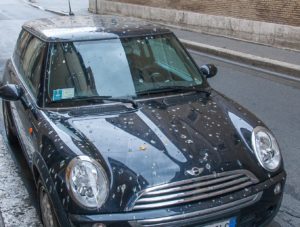
Bird droppings can damage the car paints as it is very difficult to clean the droppings and it will fade paint finishes by actually eating into the protective coating and the paint itself. The longer the droppings are allowed to sit on the paint, the more damage it will do. Birds nesting materials are very dangerous and flammable due to the straw, twigs and their droppings which later turns into dry powder form. When the birds build their nests inside the machinery there is a great risk of fire hazard. Birds also built nests in chimneys and ventilation system which not only spread disease but can block the air flow which can have horrible consequences.
Let us have a look at some of the evidence,
Khirki Masjid to get bat protection cover
Richi Verma | TNN
NEW DELHI: After Qutub Minar, it’s now Khirki Masjid’s turn to be protected from bird and bat menace. The Archaeological Survey of India (ASI) is in the process of installing bird/bat protection nets in each of the open four courtyards of this 14th-century monument. According to senior officials, the presence of bats and birds inside the monument was causing not just deterioration of the building facade, interiors and flooring caused by bird/bat droppings but a persistent foul smell lingered inside the building due to their presence as well.
Khirki Masjid, built by Khan-i Jahan Junan Shah, vizier to the Tughluq Sultan Firoz Shah, is a unique monument and named for the perforated windows, or khirkis, that decorate the upper floors. The mosque has four open courtyards that provide light and ventilation to the internal prayer spaces. “In due time, the presence of birds and bats inside the building through these open courtyards has become a big problem. The bats assemble in the dark corners, making it unsafe and bird and bat droppings have left a permanent musty, foul smell inside the mosque,” said NK Pathak, ASI superintending archaeologist (Delhi Circle). To tackle this issue, ASI will be erecting wooden structures in each of the four courtyards with steel wire frames that will hold a mesh to prevent entry of birds and bats. “The mess will be specially made to fit the size of the large courtyards. Once this is done, we will clean the monument in depth to remove all evidence of birds and bats, including chemical cleaning of the facade which has been disfigured by droppings. Hopefully, after this, the musty, foul smell within Khirki mosque will be permanently erased,” said Pathak.
Qutub Minar is under renovation and bird excreta is the reason for the damage
New Delhi |IndiaToday.in
Bats enter inside the cracks of old Sal wood doors and window panels.
Qutub Minar is under renovation after 50 years owing to the damage caused by bird excreta.
Bats enter inside the cracks of old Sal wood doors and window panels.
Bat poop and bird droppings are spelling nightmare for the centuries-old Qutub Minar in Delhi, following which the ASI has started work on replacing its old wooden doors and windows, a senior official said.
The 72.5-meter high minaret, country’s tallest, is getting refurbished after 50 years, as the Sal wood-made doors and window panels have become old, and cracks in them were allowing birds and bats to enter the inner sides of this towering monument, part of UNESCO World Heritage Qutub Complex.
The iconic stone-made tower, endowed with rich inscriptions has four round ornate balconies at different levels, with an opening at each level.
It has a diameter of 14.32 m at the base and 2.75 m at the top. It is faced with red and buff sandstones on three stores and marble on the rest, according to a publication by the Archaeological Survey of India (ASI).
Though entry to the inside of the minaret is restricted, the bird excreta reacting with the stones could have had led to serious damage, Pathak said.
There is a solution with C Tech Corporation to keep the birds away from damaging buildings, statues, and monuments.
CombirepelTM Bird repellent lacquer is the product produced by C Tech Corporation to prevent the menace caused by birds. This product is specially designed to prevent bird perching and roosting.
It is available in the form of concentrate lacquer. The product causes the bird’s pain receptors associated with taste. Some birds use their sense of smell through which they recognize that the product is a threat. The product is specially designed to prevent perching and roosting of birds. Repellent evokes a physiological effect which the birds associated with sensory cue and then learn to avoid it.
The product is anti-corrosive and water resistant and has no effect of UV light. The product is transparent and is compatible with most of the surfaces which are easy to apply.
Thus using the bird’s sensory mechanism we can get rid of them without causing them any physical harm.
Contact us at technical.marketing@ctechcorporation.com to keep the pests away.
Also, visit our websites:
1] http://www.ctechcorporation.com/
2] http://www.rodrepel.com/
3] http://www.termirepel.com/
4] http://www.combirepel.com/
Follow our Facebook pages at:
1] https://www.facebook.com/Combirepel-411710912249274/
2] https://www.facebook.com/Termirepel-104225413091251/
3] https://www.facebook.com/Rodrepel-120734974768048/
Follow us on our Twitter pages at:
1] https://twitter.com/rodrepel
2] https://twitter.com/termirepel
3] https://twitter.com/combirepel

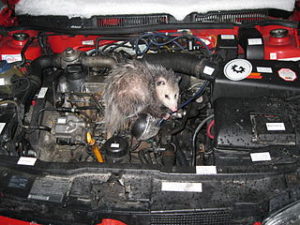 Plant-based wiring and furnishing in the car provide materials to rodents to build nests. Animals like a rat, pine marten, etc. have a pair of incisors which grow throughout their lives and to keep them in check they chew on anything sharp and hard like our automotive wirings, floor carpet, door cladding, etc. Also, these animals are attracted to the cars for warmth and shelter. Food stored in the cars attracts more animals.
Plant-based wiring and furnishing in the car provide materials to rodents to build nests. Animals like a rat, pine marten, etc. have a pair of incisors which grow throughout their lives and to keep them in check they chew on anything sharp and hard like our automotive wirings, floor carpet, door cladding, etc. Also, these animals are attracted to the cars for warmth and shelter. Food stored in the cars attracts more animals. Lenard Broadhead says biodegradable materials used in his new Honda are so “eco-friendly,” hungry squirrels find them irresistible.
Lenard Broadhead says biodegradable materials used in his new Honda are so “eco-friendly,” hungry squirrels find them irresistible.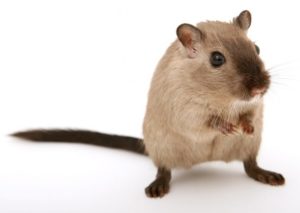 Since at least 2010, soy-based bio-plastics have been a popular alternative for wiring insulation in automobiles. But there’s a problem — rodents love how it tastes. This has allegedly resulted in a surprisingly high number of owners reporting that rats chewed through the wiring inside their automobile.
Since at least 2010, soy-based bio-plastics have been a popular alternative for wiring insulation in automobiles. But there’s a problem — rodents love how it tastes. This has allegedly resulted in a surprisingly high number of owners reporting that rats chewed through the wiring inside their automobile.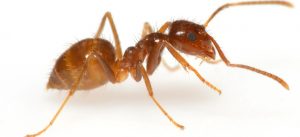
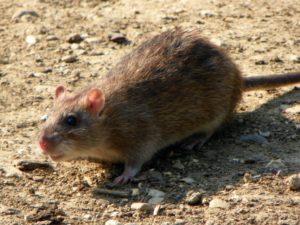 The Norway rat, roof rat, and house mouse are destructive rodent pests in and around farm facilities. This can be especially true during the winter months, as they seek food and refuge indoors. Rats and mice consume and contaminate food, gnaw on structural, mechanical, and electrical components, and weaken concrete slabs and walkways with their burrowing activities. They can also potentially carry diseases such as bubonic plague, leptospirosis, rabies, and bacterial food poisoning.
The Norway rat, roof rat, and house mouse are destructive rodent pests in and around farm facilities. This can be especially true during the winter months, as they seek food and refuge indoors. Rats and mice consume and contaminate food, gnaw on structural, mechanical, and electrical components, and weaken concrete slabs and walkways with their burrowing activities. They can also potentially carry diseases such as bubonic plague, leptospirosis, rabies, and bacterial food poisoning.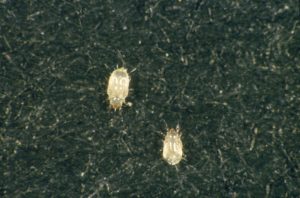
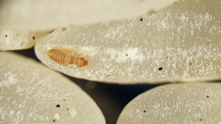
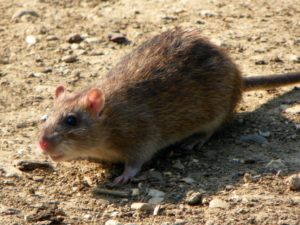 Pest menace in the agricultural sector is one of the most significant issues today in India which needs to be addressed immediately. Rodents cause millions of dollars in damages to field crops, stored grain and farm equipment every year. Apart from unpredictable rains, droughts and natural disasters insects are also the major contributors in lowering the agricultural yield every year. The damages can be categorized into two types, pre-harvest damages, and post-harvest damages. Harvest and post-harvest loss of India’s major agricultural production are estimated at Rs. 92,651crore ($13 billion) according to data published by the Ministry of food processing industries on August 9, 2016. The loss is almost three times as high as the budget for the agriculture sector.
Pest menace in the agricultural sector is one of the most significant issues today in India which needs to be addressed immediately. Rodents cause millions of dollars in damages to field crops, stored grain and farm equipment every year. Apart from unpredictable rains, droughts and natural disasters insects are also the major contributors in lowering the agricultural yield every year. The damages can be categorized into two types, pre-harvest damages, and post-harvest damages. Harvest and post-harvest loss of India’s major agricultural production are estimated at Rs. 92,651crore ($13 billion) according to data published by the Ministry of food processing industries on August 9, 2016. The loss is almost three times as high as the budget for the agriculture sector.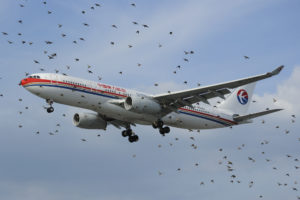 The most dangerous part of a plane when it comes to bird strikes is the engine.
The most dangerous part of a plane when it comes to bird strikes is the engine.

 You might be thinking, “Mice are tiny! How could they cause so much damage? The same can be said for rats, squirrels and other rodents. Don’t let appearances fool you. Mice and other rodents might seem sweet and innocent, but the reality is the damage they can do to your home can be significant and costly.
You might be thinking, “Mice are tiny! How could they cause so much damage? The same can be said for rats, squirrels and other rodents. Don’t let appearances fool you. Mice and other rodents might seem sweet and innocent, but the reality is the damage they can do to your home can be significant and costly.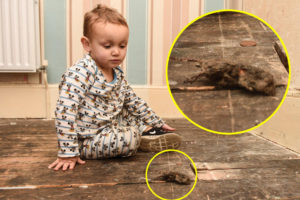 Carla Hazlett, 41, claims they have chewed her possessions and left droppings and urine all over her children’s clothes.
Carla Hazlett, 41, claims they have chewed her possessions and left droppings and urine all over her children’s clothes.